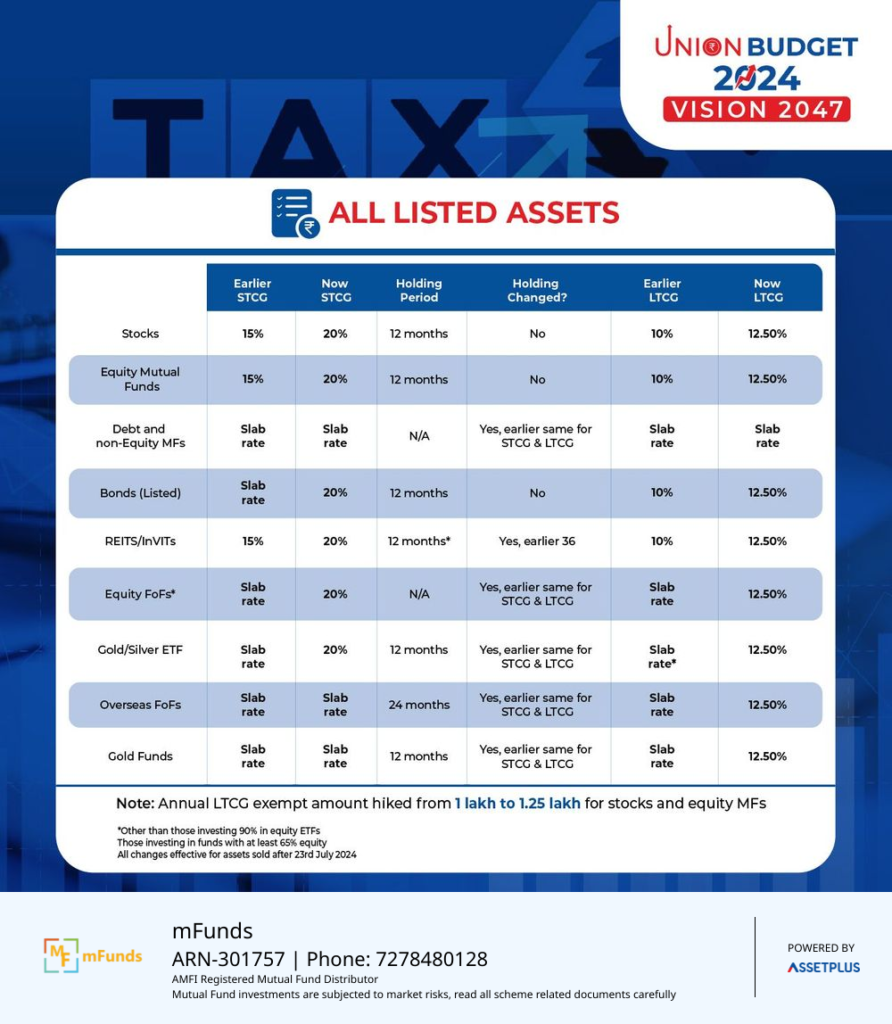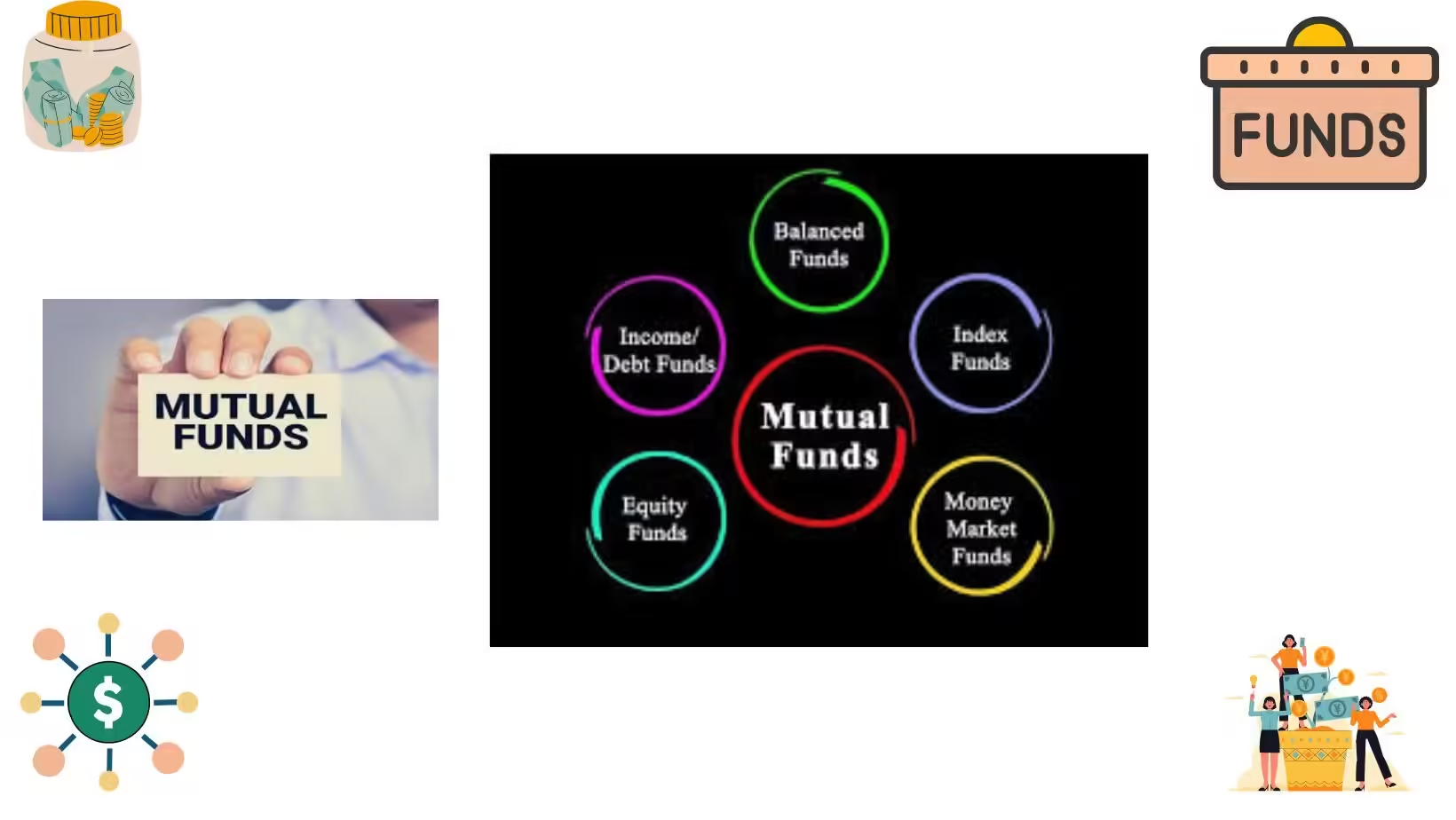Types of Mutual Funds
Types of Mutual Funds are considered to be a secure choice of investment and are seen as a great option for investors who want to diversify their portfolios at a low risk. However, there are instances when an investment in a mutual fund might not be an ideal choice for a market participant, specifically in relation to costs.
But mutual funds provide one of the largest as well as easy and flexible methods to build a diverse portfolio of investment. Additionally, they offer diverse options that can meet the diverse needs of investors. We will look at the various varieties of mutual funds at present for you to make an informed decision about investing.
Overview-Types of Mutual Funds
There’s a range of plans offered by mutual fund companies in India that serve different types of investors with different goals in terms of finances, e.g., some schemes can provide security for the cautious investor. However, other plans may offer an increase in capital value through investments in the mid or small-cap segment of the market for those who are more agressive. Mutual Fund schemes can be classed into various categories as well as subcategories, based on their objectives for investment or maturation times.
Types of Mutual Funds
Mutual funds are classified based on a variety of characteristics. Here are some of the kinds of Mutual Funds-
#Mutualfund #SIP #NFO Start your Investment with SIP Investment Now : https://pallabrouth.in/qxho Calculate Investment Return : https://pallabrouth.in/9xj0 To Invest in top Mutual fund Share your PAN Card Number Whatsapp Now With PAN Card Number _https://wa.link/91wb0n
Based on Investment Goals
Growth Funds
These are mutual funds which aim to achieve capital appreciation by investing funds into growth-oriented stocks. They focus their efforts to companies or organizations that show extraordinary growth in earnings or revenue in contrast to businesses that make dividends.
Income Funds
They are classified within the debt mutual funds class and serve as an income stream that is steady for investors. Fund diversification helps investors to put money into equity in addition to bonds. Additionally, it permits investing in a wide range of asset classes such as CDs (CD) and money market instruments, federal bonds, corporate bonds and securities and focusing on assets that have more interest. These high-interest dividends could be either invested or divided between investors.
Liquid Funds
Liquid funds are ones that are invested in fixed-income security like deposits, certificates of deposit Treasury bills, commercial papers as well as other bonds that will mature in less than the period of 91 days. The liquid funds are not backed with lock-in periods. Redeeming requests for liquid funds will be dealt with within the 24 hours of business day.
The risks associated with liquid funds tend to be at the lower end of the spectrum. They are regarded as to be the most secure of all loans because they are invested in fixed-income securities of high quality which are due to mature within a short time. This makes them ideal for investors who are cautious about risk.
Tax Savings Funds
Mutual funds that are tax-saving include which have an investment of at the minimum of 80% portfolio in stocks. These tax-saving funds are in essence equity-linked savings schemes (ELSS) which provide tax benefits to individuals who invest under Section 80C of the Income Tax Act, 1961. The lock-in time period is an ideal habit for investors to excel in longer-term investment while placing their funds into an equity-linked instrument.
The tax-saving mutual funds increase the returns of portfolios in the long run to investors. However, investors need to be cautious about the potential risk that comes with investing in equity when compared with other instruments for fixed income that can be tax-saving like the Public Provident Fund (PPF) as well as other.
Aggressive Growth Funds
The aggressive hybrid funds are mutual funds with open angles which invest in bonds and equity. These funds are suitable for investors looking to have the thrill of fluctuations, while maintaining a low risk tolerance.
Capital Protection Funds
Capital protection funds are a closed-end hybrid investment. Its initial goal is to protect an investor’s money in times of market declines. In addition, it gives them the opportunity to increase their capital by being a part of upturns in the market.
The fund is invested in a mix of fixed-income instruments such as bonds, certificates of deposit (CDs) as well as Treasury bills and equity instruments. That is, the majority of the money is put into fixed income instruments to generate steady yields on the capital that is invested. Additionally, a smaller percentage of the portfolio is an equity component in order to benefit from the advantages of growth and capital appreciation.
Fixed Maturity Funds
Fixed maturities are a type of bond funds which primarily put money into instruments that have fixed income, such as certificates of deposit, or bonds that secure current yields. The goal is to reduce the risk of fluctuating interest rates in market participants in debt.
Fixed maturities are end-of-life mutual fund options with the pre-determined term. The term of the plan varies from 30 days up to five years. Most commonly, durations are 30 days up to 180, 370, as well as 395 days.
Pension Funds
Pension funds, also known as superannuation funds or can also be referred to as superannuation fund is a plan that helps to provide retirement earnings. The funds combine with pension funds to pay monetary benefits. created by employers as well as unions or other organizations to fund their members’ or employees their retirement benefits. These funds comprise the largest investment block across the globe and control the market where they invest. when managed by experienced administrators, these funds comprise the sector of institutional investors including insurance companies, as well as investment trusts. In general, pension funds do not have to pay capital gains taxes, as well as the profits earned from their investments are tax-deferred or tax exempt.

Union Budget 2024 and Capital Gains! Here’s a quick glance at what has changed and what you need to know. For more insights and investment guidance, drop a message
Referral Link:
Based on Asset Class
Equity Funds
Equity mutual funds comprise ones that seek to earn yields by investing in shares of companies that are publicly traded across markets with capitalizations. These funds are typically categorized with moderate or high risk. The success of the businesses that the fund invests has a significant impact on determining the return of investors. Equity investors can invest in funds based on their risk tolerance along with their investment goals and desired goals. Equity mutual funds are typically best suited to the long run that is five years or more.
Debt Funds
A bond mutual fund (also known as a fixed income fund) where the investor invests large portions of funds in fixed-income securities such as bonds, government securities corporate bonds, other instruments that are based on money markets. When investing in such options, the debt mutual funds decrease the risk significantly for the investors. They are a fairly steady investment choice that may be a great way to earn wealth.
Money Market Funds
These are fund that loans to corporations for up to one year. The funds are designed for fund managers to be able to earn higher profits and keep risk in check by adjusting the duration of loans. Longer loan duration typically means higher yields.
Hybrid Funds
Hybrid funds can be described as mutual funds that offer diversification in two or more different asset classes, e.g., equity or fixed income and gold, for example. Hybrid funds are also referred to by the name of asset allocation funds give investors access to several different asset classes as well as risk-based diversification in a single investment. There are a variety of hybrid funds that offer risk-levels that vary between high risk, conservative to extremely high risk profiles.
Based on Structure
Open Ended Funds
These funds are always accessible to redemption and investment which is why they are called open-ended funds. They are the most popular type of investment for mutual funds across India. They don’t have no lock-in time or maturity dates and therefore are always open. In general, open-ended fund do not possess a limit (of AUM) in which they is able to collect investment from the general public. Open-ended funds have a NAV that is calculated daily.
NAV is calculated every day based according to the worth of the involved securities at the close of each day. The funds typically aren’t listed on exchanges. One of the major differences between closed-ended and open-ended funds is that open-ended ones provide a high level of liquidity as opposed with closed-ended funds, which have liquidity is only available after the period of lock-in specified, or when the fund reaches maturity.
Close Ended Funds
Closed-ended Funds are funds in which your money is secured for a specific time. Close-ended funds are available for subscription plans only during the current fund offering period (NFO) and then redeem units once the lock-in period has ended or when the duration of the scheme is finished. But, certain closed-ended fund types become open-ended once the lock-in time. At times, AMCs might transfer the profits of closed-ended funds after the expiration date to an open-ended fund. However, to transfer the funds it requires the consent of shareholders of the closed-ended fund must be obtained.
When comparing closed-ended and open-ended funds, certain experts in investment claim that a lock-in timeframe guarantees that the fund’s assets are stable because of the specific lock-in. Additionally, it allows managers the flexibility to build a portfolio that has future growth potential without having to worry about the risk of outflows due to deliverance, as in an open-ended funds.
Interval Funds
Interval Funds can be described as a type in a mutual funds scheme where the units are bought and sold in pre-determined times. In other words the fund house stipulates each 15-day period or other interval. While Interval Funds can invest in equity and debt but it is primarily invested in bonds that are backed by debt. Similar to other mutual funds Interval Funds are taxed based on the amount put into equity or debt.
Based on Risk
Very low risk Mutual Funds
Mutual funds with low risk are mutual funds in which investment decisions are made by investors who don’t want to risk their funds. When this is the case, investment options are made such as the credit market, and are usually longer-term investments. Due to the fact that they are lower risk, returns for these investments are very low. A good example of a risk-free fonds would be the gilt funds which invest by investing in securities issued by the government.
Medium risk Mutual Funds
The investments carry moderate risk for the investor. These investments are suitable for investors who want to be a bit risky with the investment. They also tend to yield higher rates. They can also be utilized to invest in building an accumulation of wealth over a long time.
High-risk Mutual Funds
These mutual funds are ideal for people who are willing to risk more when it comes to their finances and want for ways to grow their fortune. An example of high-risk fund is reverse mutual funds. While these funds come with risky investments, they have higher return.
Specialized Funds
The Sector Funds are those which invest in a specific segment of the market. e.g. infrastructure funds only invest in firms or instruments which are linked to the sector of infrastructure. They are linked to their performance in the selected industry. The level of risk associated with these strategies is contingent on the characteristics of the industry.
Index Funds are the funds which invest in instruments that reflect a particular index that is traded on an exchange, that mirrors the movements and return of the index. e.g. purchasing shares of BSE Sensex. BSE Sensex.
Fund of funds: They are funds that have invested in mutual funds that are not their own, and their returns are contingent on how the fund performs. fund. The funds may also be described as multi-manager funds. They can be deemed fairly safe since the investors of these funds actually have additional funds in their portfolio and are adjusting the risk in any single fund.
Emerging market funds: These are the funds that invest in emerging countries with positive prospects for the coming years. These funds are more risky because of the changing conditions of the economy and politics within the country.
International funds: They are referred to as foreign funds. They provide the opportunity to invest in companies elsewhere in the globe. The companies may also exist in developing economies. Only companies that can’t get investment will be companies that are in the country of the investor.
The Global Funds: They are those that invest funds where the investments made by the fund may be placed within a business located in any area of the world. They are different from international/foreign funds because, in global funds, investments can be made even in the investor’s own country.
Real estate funds are funds which invest in firms that operate within the real estate industry. The funds are invested in builders, realtors and companies that manage property, and businesses that provide loans. Investments in real estate could be done at any point, and includes those in the planning phase that are partially complete, or complete.

Funds that are focused on commodities: These funds do not invest directly in commodities. They invest in businesses that operate within the commodity market like mining firms or manufacturers of commodities. The funds may sometimes behave the same way as they do because they are associated with the production of their products.
Market neutral funds: They are known as neutral market funds because they do not invest in market directly. They invest in Treasury bills, ETFs and other securities. They try to achieve steady and fixed expansion.
Inverse/leveraged funds are funds operating, in contrast to conventional mutual funds. They earn their money from occur when markets are down or rise, and if markets perform well, the funds are likely to lose money. They are usually intended for investors who can to take on massive losses, but they can yield huge profits because of the greater risk that they pose.
Asset allocation funds These funds has two variations that are the fund with a target date, as well as the funds for target allocation. Portfolio managers are able to adjust the allocation of assets within these funds to produce outcomes. The funds divide the investment amount and then invest it in different instruments, including bonds and equity.
Gilt Funds: In Gilt Funds the money is placed in securities of the government for long-term investment. Because they’re invested in the government’s securities, they’re almost risk-free, and could be an ideal investment option for people who aren’t willing to be a risk.
Exchange-traded funds: They are funds that comprise made up of closed- and open-ended mutual funds that trade in the markets for stocks. These funds aren’t actively managed, they are managed in a passive manner and have a great deal of liquidity. Due to their being managed by a passive method and not actively managed, they are likely to incur lesser service fees (entry/exit load) as well as lower entry/exit load.
Takeaway
We can conclude that Mutual funds are groups of investments that are invested in various financial instruments such as bonds and stocks according to their investment objectives. Mutual funds can provide diversification with access to a wide range of different stocks. Diverse varieties of mutual funds assist to avoid various issues and help in creating lasting wealth.
#Mutualfund #SIP #NFO Start your Investment with SIP
Easy Link: https://sbimfinitiatedtrxn.page.link/fDt1BuXj1KnAamRs5
SBI InvestEasy App: https://2aia0.app.link/ICV8MjUyxLb
Sbi MF Plan: https://pallabrouth.in/sbi-mutual-funds/
MutualFund: https://pallabrouth.in/mutual-funds/
Nfo: https://pallabrouth.in/nfo/
Bonds: https://pallabrouth.in/bonds/
Investment Now : https://pallabrouth.in/qxho Calculate Investment Return : https://pallabrouth.in/9xj0 To Invest in top Mutual fund Share your PAN Card Number Whatsapp Now With PAN Card Number _https://wa.link/91wb0n



















